Bromeliads are a popular choice for indoor and outdoor gardeners alike. These plants are known for their vibrant colors and unique shapes, making them a great addition to any collection. However, brown spots on bromeliad leaves can be a cause for concern.
While these spots may not always indicate a serious problem, they can be unsightly and detract from the plant’s overall appearance.
Understanding bromeliads and their care basics is essential in identifying and treating common problems that may arise, including brown spots on the leaves. These spots can be caused by a variety of factors, including over or underwatering, old age, and exposure to high temperatures and low humidity.
Diseases and pests affecting bromeliads can also cause brown spots, such as rust disease and spider mites.
If you notice brown spots on your bromeliad leaves, it is important to identify the cause and take appropriate action to prevent further damage.
Treatment and prevention methods may vary depending on the underlying issue, but can include adjusting watering schedules, increasing humidity levels, and using fungicides or insecticides. Propagation of healthy bromeliads can also help prevent the spread of disease and pests.
Key Takeaways
- Brown spots on bromeliad leaves can be caused by various factors, including over or underwatering, old age, and exposure to high temperatures and low humidity.
- Diseases and pests such as rust disease and spider mites can also cause brown spots on bromeliads.
- Treatment and prevention methods may include adjusting watering schedules, increasing humidity levels, and using fungicides or insecticides, as well as propagating healthy bromeliads to prevent the spread of disease and pests.
You shouldn’t miss on these other top posts:
Understanding Bromeliads
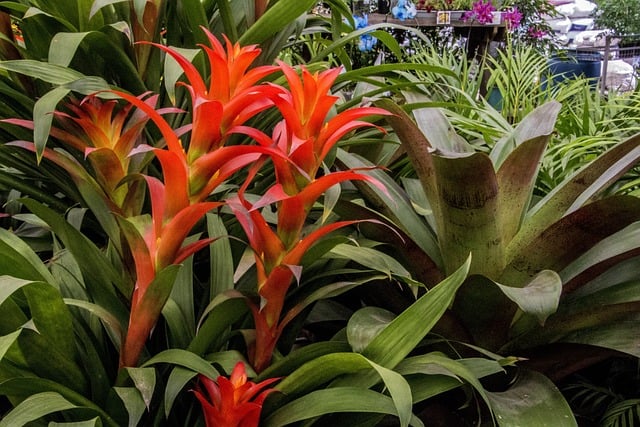
Bromeliads are a diverse family of plants that are native to the tropical and subtropical regions of the Americas. There are over 3,000 species of bromeliads, belonging to more than 50 genera. They are commonly found in rainforests, but can also be found in other habitats such as deserts and mountains.
Bromeliads are epiphytic plants, which means they grow on other plants, such as trees, and use them as anchors. They are not parasitic and do not harm the host plant. Instead, they use the host plant as a support structure and obtain nutrients and moisture from the air, rain, and debris that accumulate around them.
Bromeliads have adapted to their environment in a number of ways. One of the most distinctive features of bromeliads is their rosette-shaped leaves, which form a central cup or tank that collects water. This adaptation allows bromeliads to survive in areas where water is scarce or irregular, such as in the rainforest canopy.
Bromeliads come in a variety of shapes and sizes, from small rosettes to large plants that can reach several feet in height. They can be grown indoors or outdoors, and are popular as houseplants due to their unique appearance and ease of care.
Overall, bromeliads are fascinating plants that have adapted to their environment in a number of ways. Understanding their unique characteristics and requirements can help you care for them properly and enjoy their beauty for years to come.
Bromeliad Care Basics
Bromeliads are tropical plants that require a little bit of care to thrive. Proper care can help prevent brown spots from appearing on the leaves. Here are some basic care tips to keep your bromeliad healthy:
1. Light
Bromeliads require bright, indirect light. Direct sunlight can burn the leaves, causing brown spots to appear. If your bromeliad is getting too much light, move it to a shadier spot. If it’s not getting enough light, move it closer to a window.
2. Water
Bromeliads don’t require a lot of water. Overwatering can cause the leaves to turn brown and soggy. Water your bromeliad only when the soil is dry to the touch. Use distilled or tap water that has been allowed to sit for 24 hours to allow any chlorine to evaporate.
3. Humidity
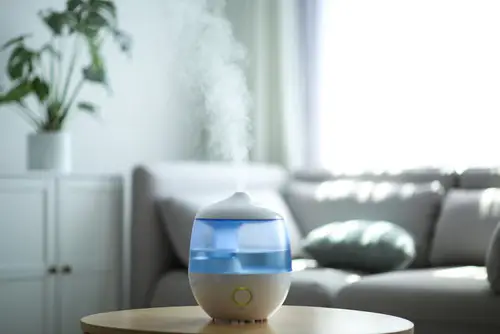
Bromeliads require high humidity levels to thrive. Low humidity can cause the leaves to turn brown and dry. To increase humidity, mist your bromeliad daily or place it on a pebble tray filled with water.
4. Soil and Potting Mix
Bromeliads require well-draining soil and potting mixes. Soil that retains too much moisture can cause the roots to rot and the leaves to turn brown. Use a pot with a drainage hole to allow excess water to drain away.
5. Fertilizer
Bromeliads don’t require a lot of fertilizer. Use a balanced fertilizer once a month during the growing season to help your bromeliad grow and thrive.
By following these basic care tips, you can help prevent brown spots from appearing on your bromeliad leaves. Remember to keep your bromeliad in a bright, indirect light, water it only when the soil is dry, and provide it with high humidity levels.
Use well-draining soil and potting mixes and fertilize your bromeliad once a month during the growing season.
Brown Spots on Bromeliad Leaves – 4 Common Problems
Bromeliads are generally hardy plants that are easy to care for, but they are not immune to problems. Here are some of the common problems that you may encounter with your bromeliad:
1. Brown Spots
Brown spots on bromeliad leaves are a common problem that can be caused by various factors. One of the most common causes of brown spots is exposure to direct sunlight or too much light.
Direct sunlight can burn the leaves of the bromeliad, resulting in leaf surface turning brown. To avoid this problem, it is best to place your bromeliad in a spot that receives bright, indirect light.
Another possible cause of brown spots is fungal disease. Helminthosporium leaf spot is a fungal disease caused by the organism Exserohilum rostratum. The spots first appear yellow and blister-like.
As the infection evolves, the spots will enlarge and become sunken and brown. A yellow border may still appear around the outer edge of the spot. If you suspect that your bromeliad has a fungal disease, you should isolate the plant and treat it with a fungicide.
2. Wilting and Drying
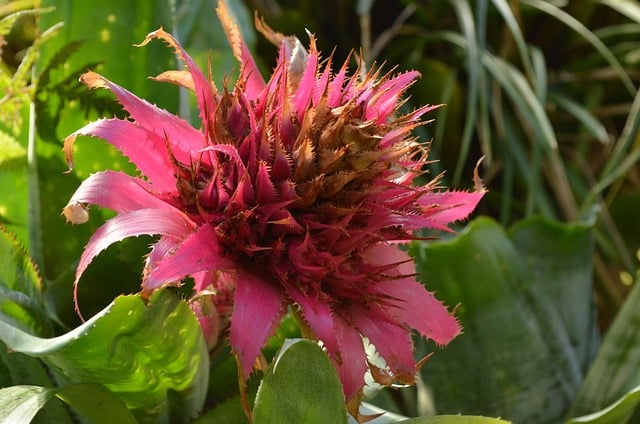
Bromeliads are sensitive to both overwatering and underwatering. Overwatering can cause the roots to rot, while underwatering can cause the leaves to wilt and dry out.
To avoid these problems, it is important to water your bromeliad correctly. Water your bromeliad only when the top inch of soil feels dry to the touch. Use a well-draining soil mix and make sure that the pot has adequate drainage holes.
3. Yellow Spots
Yellow spots on bromeliad leaves can be caused by several factors, including fungal disease, insect infestation, and nutrient deficiency. If you notice yellow spots on your bromeliad leaves, inspect the plant closely for signs of insect infestation.
Spider mites are a common pest that can cause yellow spots on bromeliads. If you suspect that your bromeliad has a pest problem, treat it with an insecticide.
4. Bromeliad Turning Brown
If your bromeliad is turning brown, it may be a sign of a fungal disease or a watering problem. Check the soil moisture level and adjust your watering schedule accordingly.
If the soil is too wet, allow it to dry out before watering again. If the problem persists, inspect the plant for signs of fungal disease and treat it with a fungicide if necessary.
Brown Spots on Bromeliad Leaves
Bromeliads are beautiful and exotic plants that can add a touch of tropical paradise to any home. However, when brown spots start to appear on the leaves, it can be a sign that something is wrong.
Brown spots on bromeliad leaves can be caused by a variety of factors. One common cause is sunburn. Bromeliads are tropical plants that are used to filtered light, so if they are exposed to direct sunlight for too long, they can get sunburned.
This can cause brown spots to appear on the leaves. To prevent sunburn, it is important to keep your bromeliad in a location that receives filtered light or to provide shade if necessary.
Another cause of brown spots on bromeliad leaves is leaf spot. Leaf spot is a fungal disease that can cause brown spots to appear on the leaves. The spots may be small at first, but they can grow larger over time.
To prevent leaf spot, it is important to avoid getting the leaves wet when watering your bromeliad. If you do notice leaf spot on your bromeliad, you can treat it with a fungicide.
Overwatering can also cause brown spots to appear on bromeliad leaves. When the soil is too wet, it can cause the roots to rot, which can lead to brown spots on the leaves. To prevent overwatering, make sure that the soil is well-draining and that you allow the soil to dry out slightly between waterings.
Causes of Brown Spots
Brown spots on bromeliad leaves are a common issue that can be caused by various factors. Understanding the causes of brown spots is crucial to prevent further damage and maintain the health of the plant. Here are some of the most common causes of brown spots on bromeliad leaves:
1. Overwatering

Overwatering is one of the most common causes of brown spots on bromeliad leaves. When the soil is too moist, it can lead to root rot, which can cause brown spots on the leaves. It is important to ensure that the soil is well-draining and not watered too frequently. If the soil feels damp, it is best to wait before watering again.
2. Underwatering
Underwatering can also cause brown spots on bromeliad leaves. When the plant does not receive enough water, it can become dehydrated, which can cause the leaves to turn brown. It is important to water the plant regularly, especially during hot and dry weather.
3. Low Humidity
Bromeliads require high humidity levels to thrive. When the humidity levels are too low, it can cause the leaves to turn brown and dry out. It is important to provide the plant with enough moisture and humidity to prevent brown spots from forming.
4. Full Sun
While bromeliads require bright light to grow, direct sunlight can cause the leaves to burn and turn brown. It is important to provide the plant with bright, indirect light to prevent brown spots from forming.
5. Hard Water
Using hard water to water bromeliads can cause brown spots on the leaves. Hard water contains high levels of minerals that can build up in the soil and on the leaves, causing damage. It is best to use distilled or rainwater to water the plant.
Diseases and Pests Affecting Bromeliads
Bromeliads are susceptible to a range of diseases and pests that can cause brown spots on their leaves. Understanding these issues can help gardeners take the necessary steps to prevent and treat them.
Pests
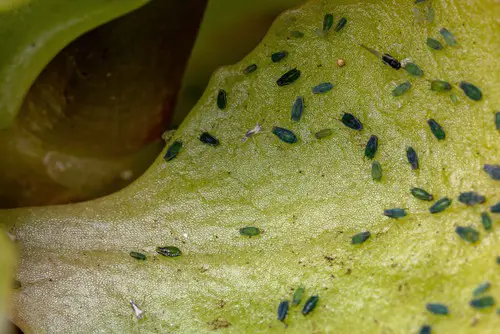
Mealybugs, scale, aphids, and other insect infestations can cause brown spots on bromeliad leaves. Mealybugs are small, white, cottony insects that feed on the sap of the plant, causing yellowing and brown spots on the leaves.
Scale appears as small brown ovals or dots on the leaves and can be managed by removing the adult by hand or with a cotton swab and rubbing alcohol. Aphids are small, soft-bodied insects that suck the sap from leaves, causing yellowing and brown spots.
Diseases
Root rot, crown rot, pythium, helminthosporium, and rust disease are common fungal diseases that can cause brown spots on bromeliad leaves. Root rot occurs when the roots of the plant are damaged by overwatering or poor drainage, causing the leaves to turn yellow and brown.
Crown rot affects the center of the plant, causing it to become brown and soggy. Pythium causes wilting, blanching, and eventually dark, mushy roots.
Helminthosporium leaf spot tends to vary with each pathogen/host pair from very small (pinhead size), solid brown to purple color lesions or spots to expanded lesions with bleached centers that girdle the leaf blade. Rust disease produces brownish welts filled with liquid on the undersides of leaves.
Preventing these issues requires good cultural practices, such as proper watering, adequate drainage, and regular cleaning of the plant.
Gardeners should also inspect their plants regularly for signs of pests or diseases and take appropriate action if they notice any issues. Applying a fungicide may help to prevent or treat fungal diseases.
Treatment and Prevention of Brown Spots
Brown spots on bromeliad leaves can be a sign of various problems, including fungal infections, lack of sunlight and airflow, overwatering, and low humidity. Here are some ways to treat and prevent brown spots on bromeliad leaves:
1. Care and Water
It is important to water bromeliads properly to prevent brown spots. Overwatering can lead to root rot and fungal infections, while underwatering can cause the leaves to dry out and turn brown.
It is recommended to water bromeliads once a week, making sure the soil is moist but not soggy. If the plant is in a pot without a drainage hole, it is important to be careful not to overwater it. Using distilled water or rainwater is recommended, as tap water can contain minerals that can harm the plant.
2. Light and Humidity
Bromeliads require bright, indirect light to thrive. If the plant is not getting enough light, the leaves can turn brown. It is recommended to place the plant near a window that gets bright, indirect light.
Low humidity can also cause brown spots on bromeliad leaves. Using a humidifier or placing a tray of water near the plant can help increase humidity. It is important to avoid misting the plant, as this can lead to fungal infections.
3. Soil and Drainage
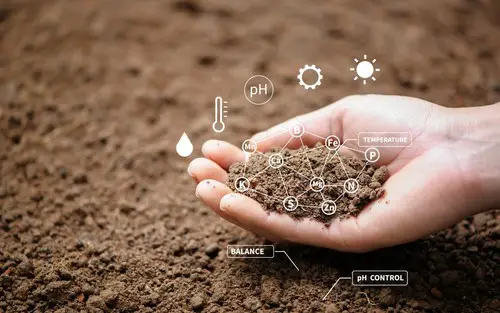
Bromeliads require well-draining soil to prevent root rot and fungal infections. Using a potting mix that is specifically designed for bromeliads is recommended. It is also important to make sure the pot has a drainage hole to allow excess water to drain out.
If the plant is in a pot without a drainage hole, it is recommended to use a layer of gravel or perlite at the bottom of the pot to improve drainage.
4. Fungicide
If brown spots on bromeliad leaves are caused by a fungal infection, using a fungicide can help treat the problem. It is important to choose a fungicide that is safe for bromeliads and follow the instructions carefully.
Overall, preventing brown spots on bromeliad leaves requires proper care, watering, light, humidity, and soil. If brown spots do appear, it is important to identify the cause and treat it promptly to prevent further damage to the plant.
Propagation of Healthy Bromeliads
Bromeliads are easy to propagate, making them a popular choice for houseplant enthusiasts. One of the easiest ways to propagate a bromeliad is by taking cuttings of offshoots, or pups, from the base of the mother plant. These pups can be removed and planted to create new plants.
When propagating bromeliads, it is important to use a healthy mother plant. A healthy mother plant will generally produce multiple pups, sometimes as many as three or four, before the plant completely fails. This kind of propagation is known as asexual reproduction, and it’s a form of cloning.
To propagate bromeliads using pups, carefully remove the pup from the parent plant. The pup should have its roots and a small amount of the base intact. Once removed, the pup can be planted in a potting medium that is well-draining and has good aeration.
When planting the pup, choose a container that is appropriate for its size. Bromeliads are low-maintenance houseplants that do not require a lot of space, so a small container is usually sufficient. Make sure the container has drainage holes to prevent water from accumulating in the potting medium.
After planting the pup, water it thoroughly and then allow the potting medium to dry out slightly before watering again. Bromeliads are adapted to growing in the wild in low-nutrient environments, so they do not require a lot of fertilizer.
However, a small amount of fertilizer can be added to the potting medium every few months to provide the plant with essential nutrients.
Frequently Asked Questions
How do you treat Helminthosporium leaf spot on bromeliad?
Helminthosporium leaf spot is a common fungal disease that affects bromeliads. It appears as small, brown spots on the leaves of the plant. To treat Helminthosporium leaf spot on bromeliad, the affected leaves should be removed immediately.
The plant should be sprayed with a fungicide that is specifically designed for use on bromeliads. The fungicide should be applied according to the manufacturer’s instructions.
What to do when bromeliad leaves turn brown?
Bromeliad leaves turn brown for a variety of reasons, including overwatering, underwatering, and exposure to direct sunlight. To prevent brown spots on bromeliad leaves, it is important to ensure that the plant is getting the right amount of water and light.
When bromeliad leaves turn brown, the affected leaves should be removed immediately. The plant should be moved to a location that provides the right amount of light. If the plant is overwatered, the soil should be allowed to dry out before watering again.
What is the fungus on my bromeliads?
There are several types of fungi that can affect bromeliads, including Helminthosporium leaf spot, Anthracnose, and Fusarium wilt. These fungi can cause brown spots on the leaves of the plant, as well as other symptoms such as wilting and leaf drop.
To identify the fungus on your bromeliads, it is important to examine the leaves of the plant closely. If you are unsure what type of fungus is affecting your plant, you should consult a plant expert.
How to trim bromeliad leaves?
Trimming bromeliad leaves is necessary when they become damaged or diseased. To trim bromeliad leaves, you should use a sharp, clean pair of scissors or pruning shears.
The leaves should be cut as close to the base of the plant as possible, without damaging the plant. It is important to disinfect the scissors or pruning shears before and after use to prevent the spread of disease.
Bromeliad leaves turning yellow and brown?
Bromeliad leaves turning yellow and brown can be a sign of overwatering or underwatering. When bromeliads are overwatered, the roots can become waterlogged, which can lead to root rot.
When bromeliads are underwatered, the leaves can become dry and brittle, which can lead to brown spots on the leaves. To prevent yellow and brown spots on bromeliad leaves, it is important to ensure that the plant is getting the right amount of water.
Homemade fungicide for bromeliads?
Homemade fungicides can be effective for treating fungal diseases on bromeliads. One effective homemade fungicide is a mixture of baking soda and water.
To make the fungicide, mix one tablespoon of baking soda with one gallon of water. The mixture should be sprayed on the affected leaves of the plant. Another effective homemade fungicide is a mixture of apple cider vinegar and water.
To make the fungicide, mix one part apple cider vinegar with three parts water. The mixture should be sprayed on the affected leaves of the plant.

Hey, I’m Lisa and I’ve been an avid gardener for over 30 years. I love writing, talking and living in the garden! Feel free to connect with me on my socials below

